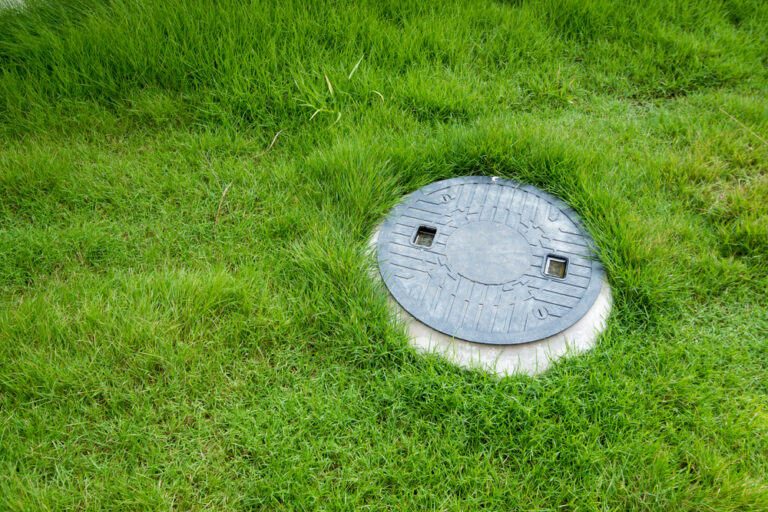Your septic system is a well-designed system that ensures wastewater from your home is disposed of safely and efficiently. However, like any aspect of your home’s function, there is potential for components to become damaged and malfunction.
How will you know if you have a septic system problem? Here are some signs that there is an issue with your septic system, as well as some basic preventative measures.
1. Sewage Backup
There are a few different reasons why you may notice water or an odorous black liquid coming up from your household drains. Your septic tank or drain field are too full or there is a blockage.
Your septic tank works by allowing waste from your home to separate into three substances: sludge (heavier materials that sink to the bottom), scum (lighter materials that float to the top), and wastewater (which is released into the drainfield).
Over time, naturally-occurring bacteria will cause the sludge and the scum to break down into wastewater to be released. However, if your tank receives a large amount of water very fast, the tank may become overloaded and create a backup in your home. Alternatively, if those materials are not properly broken down and clog the drain pipes, it will also cause a backup.
You can prevent these issues by reducing your water usage. Take shorter showers, wash laundry in smaller loads throughout the week and install low-flow toilets.
Also, be mindful of the substances you flush – avoid flushing paper towels, diapers, feminine products, grease and leftover foods.
2. Slow Drainage
Slow drainage in your home can also indicate a blockage – usually in the pipe that flows into the septic tank.
Before you grab the Draino to fix the problem, remember that harsh chemicals can deteriorate your pipes and destroy the good bacteria in your tank that breaks down the waste.
Try to stick to natural products that utilize bacteria and enzymes. Not only will this unclog your pipes but it will help to break down the waste in your septic tank.
3. Pooling Water in Yard
When there is heavy rainfall or a high water table, it can prevent the septic tank from draining properly.
The result can be soggy areas in your yard.
However, a leak in your septic line can also cause this issue.
If you believe the problem has been caused by excessive rainfall, give your septic system a chance to catch up with drainage by using it less.
Otherwise, pooling water in your yard should be inspected by a septic system technician.
4. Greener Grass Around the Septic Tank
While you may think that lush and green grass around your septic tank is a sign of good things, it is actually an indication that sewage may be seeping into your yard.
Because the soil on top of your septic tank isn’t as deep as the rest of your lawn, it’s common for the grass there to dry out.
Therefore, if the grass is seeming to thrive in that area, it could mean there is a leak of effluent (liquid wastewater) from the tank before it has a chance to reach the drainfield.
This is because the effluent acts as a fertilizer for the grass.
5. Trees or Shrubs Near Septic System
While many homeowners place emphasis on their landscaping, you need to be careful where trees and shrubs are positioned on your property. Tree roots naturally seek out sources of water and moisture. Nothing can get in their way to reach it. Roots will wrap around or bore through obstacles in order to get to a water source. Because of this, they can potentially cause damage to your septic tank as well as other components of the system.
If this happens, you may notice signs such as greener grass and pooled water in your yard (as mentioned above). Should these symptoms occur, check to see if there are any trees or shrubs growing close to the system. Be wary of the trees and shrubs you plant in your yard. By knowing how tall they will be at maturity, you can then plant them that far away from your septic system.
6. Pungent Smells
The smell of septic gas can be an indication of numerous issues, including a dried-out wax seal on your toilet or a dry trap in the floor drain. If you notice persistent odours inside your home, you should first check all fixtures to rule out any interior issues. If all other potential issues have been ruled out, there could be a leak in your septic line.
You can reduce the chances of your septic system leaking by making sure that surface drainage, as well as roof runoff, are directed away from the septic tank and drainfield.
Be Proactive
By paying attention to the function of your septic system, you can easily identify problems as they occur. The best way to avoid major issues with your septic system is to have your septic system inspected once a year and pumped out every 3-5 years. This will help catch problems, such as leaks, rust and overflowing, before they require expensive repairs or a possible system replacement.
Our trained septic tank technicians at Peak Sewer & Underground Services are available 24/7 for all of your septic system needs. Have your system inspected or repaired by contacting us today!

